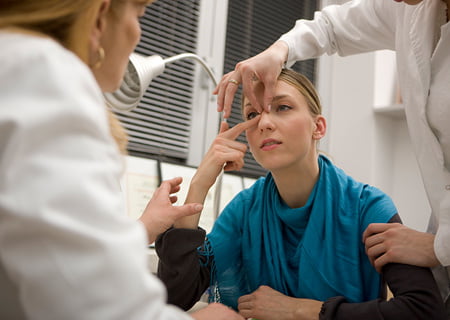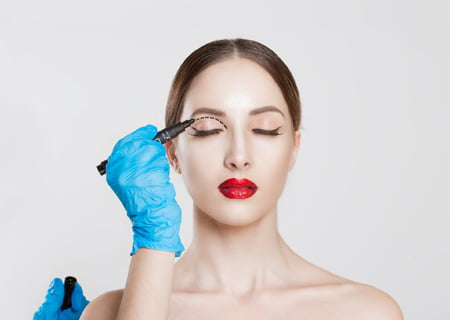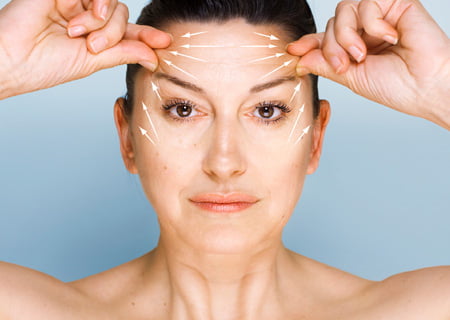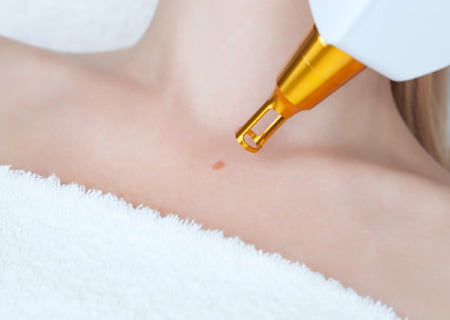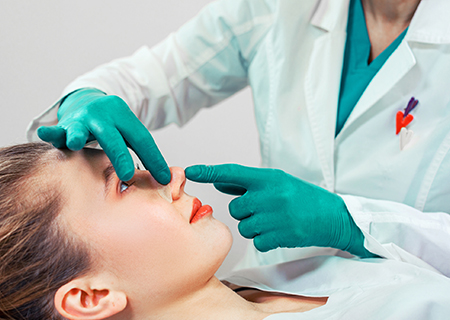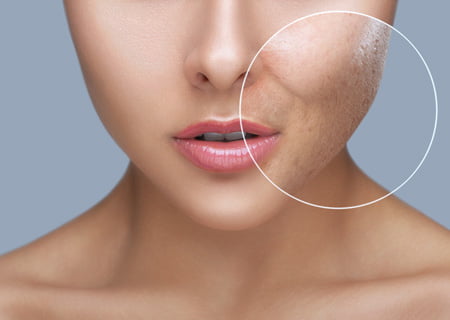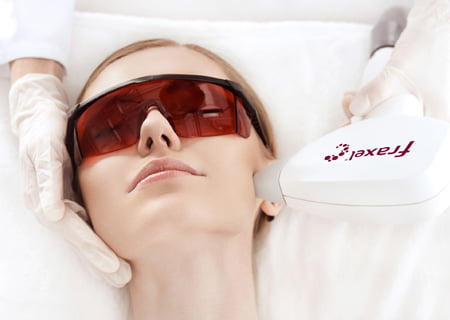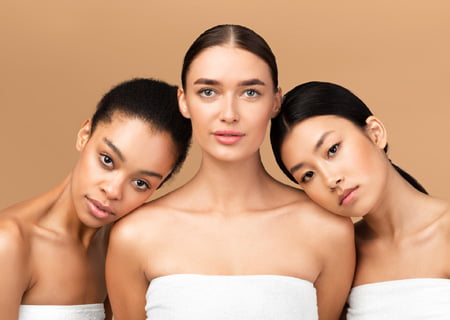Nasal Defects & How We Fix Them
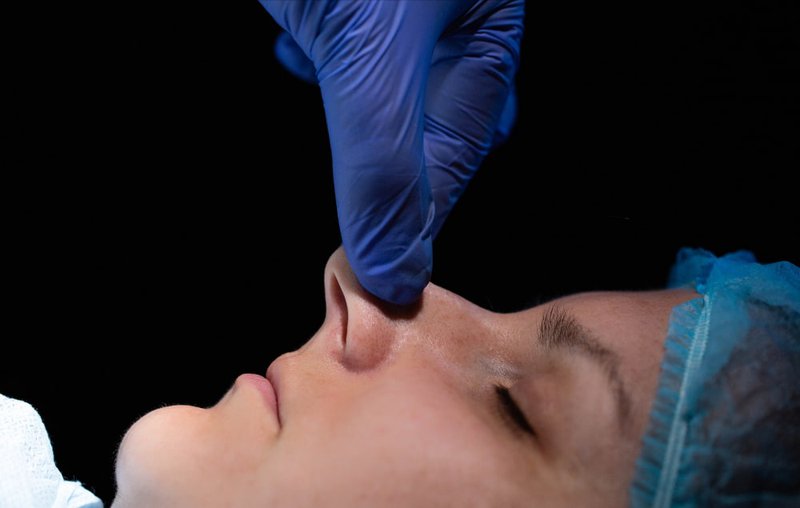
“Defect” is a clinical word for a feature that throws off proportion or airflow. Most noses combine a few issues at once, shape, support, and breathing, so the plan is individualized. Dr. Zakhary typically corrects these concerns using a Closed Mini-Dissection Ultrasonic Rhinoplasty approach (internal incisions, precise bone work, and a recovery that’s usually smoother), often paired with functional breathing improvements when needed.
Common nasal defects and our approach
1) Dorsal hump (convex bridge)
What it looks like: A bump on the profile; bridge appears high or uneven
Why it happens: Excess bone/cartilage or post-trauma remodeling
People also search
How we fix it: Ultrasonic hump reduction for millimetre control, then controlled osteotomies to narrow and realign the nasal bones; profile is balanced with tip and radix adjustments.
2) Low bridge or “saddle” deformity
What it looks like: A flat bridge or mid-dorsal dip
Why it happens: Genetics, previous surgery, or injury
How we fix it: Dorsal augmentation using cartilage (usually septal; ear if needed) to build natural height, with fine contour blending so edges disappear.
3) Crooked or deviated nose
What it looks like: Bridge or tip points off-centre; the mid-vault may twist. Breathing can be impaired
Why it happens: Septal deviation, asymmetric bones, past fractures
How we fix it: Septoplasty plus structural rhinoplasty; structural grafts and dorsal contouring grafts to stabilize the mid-vault, precise osteotomies to straighten the bony pyramid, and cartilage grafts where needed to resist relapse.
4) Wide bridge or “open roof” width
What it looks like: Broad upper nose; light reflexes don’t define a gentle, narrow line
Why it happens: Natural bony width, or a previously reduced hump without proper closure
How we fix it: Lateral osteotomies to close the roof and refine width; dorsal contouring grafts maintain internal valve function and smooth mid-vault lines.
5) Drooping (ptotic) tip
What it looks like: Tip points downward at rest or when smiling; nose reads long
Why it happens: Weak tip support, long caudal septum, depressor septi muscle pull
How we fix it: Tip support and rotation with sutures and selective grafts; address muscle dynamics; often paired with modest dorsum smoothing.
6) Over-rotated or short nose
What it looks like: “Turned-up” nose, excessive nostril show
Why it happens: Weak/shortened septal support, previous surgery
How we fix it: Lengthening maneuvers (e.g., septal extension or structural support grafts) to bring the tip down and restore balanced rotation.
7) Long nose
What it looks like: Increased distance from radix to tip; may shadow the upper lip
Why it happens: Overly long caudal septum or drooping tip geometry
How we fix it: Subtle tip rotation/support and, if indicated, controlled reduction of the caudal septum; the dorsal line is rebalanced so the eye reads a shorter, elegant nose.
8) Overprojected tip
What it looks like: Tip sticks out too far from the face; sharp tip-lip angle
Why it happens: Strong lower lateral cartilages and support mechanisms
How we fix it: Deprojection with controlled cartilage set-backs and suture techniques; dorsum is harmonized so profile remains strong but balanced.
9) Underprojected tip
What it looks like: Tip sits too close to the face; appears blunt from the front
Why it happens: Weak support, thick skin, or congenital cartilage shape
How we fix it: Projection with structural tip grafts and support sutures to advance and define the tip, planned around skin thickness.
10) Bulbous or boxy tip
What it looks like: Round or square tip; weak definition on front view
Why it happens: Robust lower lateral cartilages and/or thicker skin
How we fix it: Cartilage reshaping (not over-resection), dome-defining sutures, possibly a small tip graft to sharpen light reflexes; alar base work only if width contributes.
11) Wide alar base / flaring nostrils
What it looks like: Nostrils extend beyond the ideal alar-facial groove; dynamic flare with smiling
Why it happens: Natural base width, soft-tissue excess, dynamic muscle action
How we fix it: Alar base reduction with scars hidden in natural creases; internal flare reduction can be combined when indicated.
12) Valve collapse (internal or external)
What it feels like: Poor airflow, especially on deep inhale; sidewall may collapse
Why it happens: Weak mid-vault or sidewall support, prior surgery
How we fix it: Structural support and dorsal contouring grafts (internal valve) and/or alar batten/rim grafts (external valve) to reinforce the airway while maintaining clean aesthetics.
13) Asymmetric nostrils or alar rims
What it looks like: One nostril higher, smaller, or differently shaped
Why it happens: Cartilage/soft-tissue asymmetry, prior surgery, trauma
How we fix it: Precise alar base adjustments, rim grafts, and tip/columella balancing to improve symmetry while keeping a natural, non-overdone look.
14) Thick-skinned or “fleshy” nose
What it looks like: Softer surface definition; tip highlights are muted
Why it happens: Thicker sebaceous skin and subcutaneous tissue
How we fix it: Build a strong underlying framework to push definition through the skin; meticulous swelling control and realistic timeline guidance.
15) Revision issues (pollybeak, inverted-V, bossae)
What it looks like: Supratip fullness (pollybeak), mid-vault step-off (inverted-V), or visible cartilage edges (bossae)
Why it happens: Over/under-resection, lost support, scarring
How we fix it: Structural reconstruction — refining excess soft tissue, restoring mid-vault with spreaders, smoothing edges, and re-establishing tip support.
Important: Function is always part of the conversation. Many cosmetic changes are paired with septoplasty or valve support to improve breathing and long-term stability.
Our technique: Closed Mini-Dissection Ultrasonic Rhinoplasty
- Internal incisions keep external scarring minimal.
- Ultrasonic bone sculpting allows precise hump reduction and controlled osteotomies, which can reduce bruising and swelling for many patients.
- Framework-first planning (cartilage support, mid-vault stability) protects both shape and function.
Quick reference: What you see → What we do
| Concern | What you see | What we assess | Typical correction (closed approach where suitable) |
|---|---|---|---|
| Dorsal hump | Bump on profile | Hump makeup, radix height | Ultrasonic reduction, osteotomies, radix/tip balance |
| Low bridge | Flat profile | Dorsal support, skin envelope | Cartilage augmentation, fine contour blending |
| Crooked nose | Off-centre axis | Septum, bony pyramid, mid-vault | Septoplasty, structural and dorsal contouring grafts, controlled osteotomies |
| Drooping tip | Tip points down | Tip support, caudal septum, muscle pull | Tip rotation/support, muscle management |
| Over/under-projection | Tip too far/too close | Tip–lip–chin balance | Deprojection sutures/set-backs OR structural tip grafts |
| Boxy/bulbous tip | Wide, low definition | Cartilage shape, skin thickness | Dome sutures, conservative reshaping, small tip graft |
| Wide alar base | Broad nostrils/flare | Alar-facial groove, dynamic flare | Alar base reduction; internal flare reduction |
| Valve collapse | Airflow drops on inhale | Valve angles, sidewall rigidity | structural and dorsal contouring grafts, alar batten/rim grafts |
Planning and recovery at a glance
Consultation & planning
- Detailed facial analysis (front, oblique, profile)
- Internal exam for septum, valves, turbinates
- Discussion of proportions (radix height, tip projection/rotation)
- Personalized surgical plan; photos for goal-setting
Typical recovery snapshots (can vary)
- Splint ~2 weeks; social downtime usually 14 days
- Bruising often fades by ~2 weeks; swelling refines over months
- Light exercise resumes gradually; we will tailor milestones to you
Frequently asked questions
Can you fix breathing and shape at the same time?
Yes. Many patients combine cosmetic refinement with septoplasty and valve support so the nose both looks and works better. Remember that if the outside is narrowed or made smaller, the inside is also reduced and that can affect breathing space.
Where do grafts come from?
Most support grafts come from your own septal cartilage. If additional material is needed, ear cartilage is a common option.
Will I have visible scars?
With a closed approach, incisions are inside the nose. When alar base reduction is indicated, scars are placed in natural creases and typically heal discreetly.
Is filler a good alternative for defects?
For very small irregularities or temporary camouflage, non-surgical rhinoplasty can help. It does not improve breathing and is not a substitute for structural correction.
Ready to talk about your nose?
Bring your goals, and a few inspo photos of profiles you like. In a consultation, we will:
- Examine proportions, skin thickness, and breathing (septum/valves)
- Discuss a closed, mini-dissection ultrasonic plan tailored to you
- Outline recovery milestones and what to expect at each stage
- Review realistic outcomes based on your anatomy
Request a Consultation
Prefer to start with questions? Call our Calgary office or send a message, our team is happy to help.
